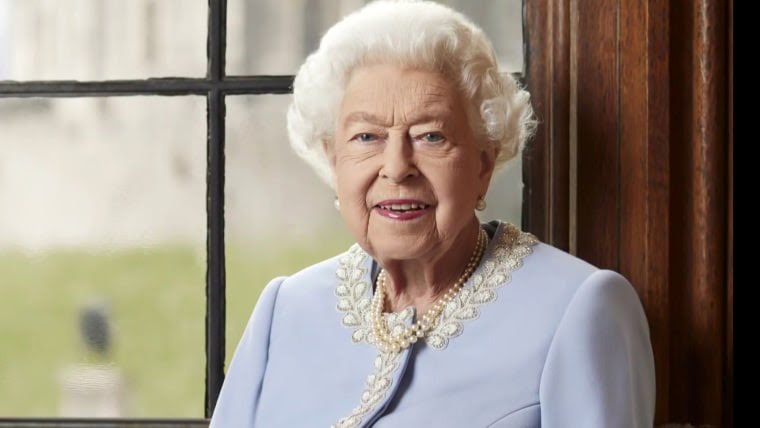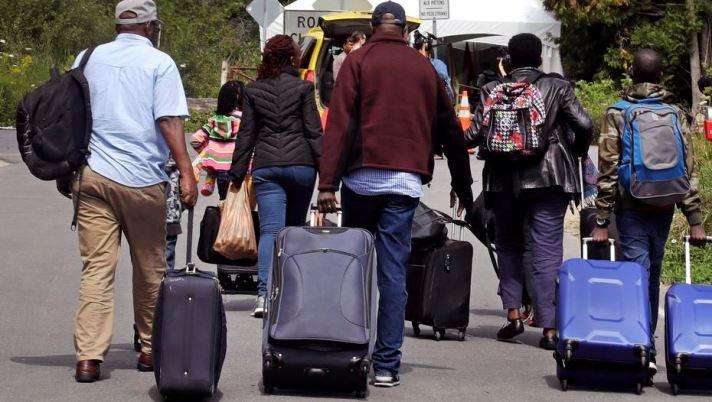Headline
Queen Elizabeth II’s State Funeral – What To Expect

The state funeral of Queen Elizabeth II at London’s Westminster Abbey on Monday will be the culmination of decades of meticulous planning.
Here is how the day will unfold:
– Return to the abbey –
The last time Westminster Abbey was used for a monarch’s funeral was for King George II in 1760.
Since then, the preferred church has been St. George’s Chapel at Windsor Castle but Elizabeth opted for a larger venue.
On the morning of the funeral, the lying in state – begun at Westminster Hall in parliament on Wednesday – will continue until 6:30 am (0530 GMT).
At 6:30 am, the doors will close in preparation for the transfer of the coffin to the nearby abbey.
– Gun carriage –
Shortly after 10:35 am, a bearer party will lift the coffin from the catafalque, a raised platform, and carry it to the state gun carriage which will be waiting outside the North Door of Westminster Hall.
The state gun carriage is a field gun carriage held by the Royal Navy since 1901, when it was withdrawn from active service for the funeral of Queen Victoria.
It was also used for the funerals of kings Edward VII, George V, the queen’s father George VI, wartime prime minister Winston Churchill and Lord Louis Mountbatten, who was the last viceroy of British-ruled India.
READ ALSO: Queen Elizabeth: Britain Created Lopsidedness In Nigeria – First Republic Minister
It will be drawn by 142 junior enlisted sailors – naval ratings – rather than horses and will set off at 10:44 am.
The queen’s eldest son and successor, King Charles III, will lead members of the royal family walking behind the coffin to the West Gate of Westminster Abbey, arriving at 10:52 am.
The funeral, conducted by the Dean of Westminster, David Hoyle, with Archbishop of Canterbury Justin Welby giving the sermon, will start at 11:00 am.
Towards the end of the service at around 11:55 am, the Last Post bugle call will sound, followed by a two-minute silence.
London Heathrow Airport said flights would be stopped into and out of the airport 15 minutes before and after the silence.
The service will close with the national anthem and a Lament, a musical expression of grief, at around noon.
– Major security operation –
Westminster Abbey can hold up to 2,200 people.
Those present in the congregation will include family members, Britain’s Prime Minister Liz Truss, senior politicians, former premiers, and more than 100 kings, queens and heads of states and other VIPs.
Invitations are expected to be sent to representatives of all countries with which Britain has diplomatic relations.
The palace has not released a formal guest list.
Russia and Belarus have not been invited because of the war in Ukraine, diplomatic sources said this week.
Military-run Myanmar and isolated North Korea have also not been invited, with no attendance either by representatives from Syria, Venezuela or Taliban-run Afghanistan.
– Journey to Windsor –
At 12:15 pm, the coffin will be drawn on the gun carriage, followed on foot by members of the royal family led by the king, to Wellington Arch at Hyde Park Corner near Buckingham Palace, from where it will continue to Windsor by royal hearse.
READ ALSO: Putin Won’t Attend Queen Elizabeth’s Funeral – Kremlin
The hearse will arrive at Windsor at 3:06 pm and make its way to the castle via the Long Walk avenue, again with flights stopped, as the castle is on the flight path into and out of Heathrow.
The king and senior members of the royal family will join the procession on foot from the Quadrangle at Windsor Castle at around 3:40 pm before the cortege halts at the chapel at 3:53 pm.
The televised committal service starts at 4:00 pm.
Monday’s committal service is expected to be attended by at least 800 people, most of whom will not have been at the abbey.
They will include past and present staff members who worked for the queen.
At the end of the service the coffin will be lowered into the Royal Vault as the queen’s piper plays a lament from the doorway and the Archbishop of Canterbury pronounces the blessing.
“God Save the King” will be sung and the service ends.
– Final resting place –
A private burial service will be held at 7:30 pm.
The queen’s final resting place will be the King George VI memorial chapel, which is an annexe to the main chapel, alongside her husband Prince Philip.
READ ALSO: Nigerian Professor Under Fire Over Tweets On Queen Elizabeth II
The queen’s mother and father – King George VI and Queen Elizabeth the queen mother – were interred there with the ashes of her younger sister Princess Margaret.
AFP
Headline
JAPA: Top Six Countries To Obtain Easiest Citizenship

As a Nigerian considering relocation plans, interest in countries with clear and less complicated citizenship pathways is a smart way to not just guarantee greener pastures, but also provide you with the opportunity to feel more at home in a foreign land. While some of the programmes are ancestry-based, others allow Nigerians with such a link to try other means.
Contents
1. Dominica
2. Ireland
3. Turkey
4. Portugal
5. Vanuatu
6. Italy
Though rules vary widely across borders, some nations stand out for offering citizenship through investment or family ties with fewer hurdles and faster processing timelines.
Below are the top six countries with the easiest citizenship:
1. Dominica
Dominica operates a citizenship-by-investment programme that allows applicants to qualify through a contribution to the government’s Economic Diversification Fund or by investing in approved real estate. Processing typically takes a few months. Citizens enjoy visa-free or visa-on-arrival access to over 140 countries, including the Schengen Zone. There is no residency requirement, and dual citizenship is permitted.
READ ALSO:Japa: 5 Affordable European Countries Nigerians Can Relocate To
2. Ireland
Ireland provides a clear citizenship pathway for individuals with Irish ancestry. Those with an Irish-born parent qualify automatically, while people with an Irish-born grandparent can apply through the Foreign Births Register. An Irish passport grants full European Union rights, including freedom of movement across EU countries. Dual citizenship is allowed, and there is no language requirement for applicants applying by descent.
3. Turkey
Turkey offers a fast-track citizenship option through investment. Foreign nationals who purchase qualifying real estate valued at a minimum of $400,000 can obtain citizenship within a few months. The programme does not require residency or renunciation of an existing nationality. Turkish passport holders have visa-free or visa-on-arrival access to several countries, with ongoing efforts to expand travel agreements.
4. Portugal
Portugal’s Golden Visa programme provides a residency-to-citizenship route for foreign investors. After five years of legal residence and meeting programme conditions, applicants may apply for citizenship. Approved investment options include venture capital funds and other qualifying assets. Successful applicants gain an EU passport, access to the Schengen Area, and dual citizenship, subject to passing a basic Portuguese language test.
READ ALSO:Japa: Lagos Suffers Deficit Of 30,000 Doctors, Commissioner Laments
5. Vanuatu
Vanuatu runs one of the world’s fastest citizenship programmes. Through its Development Support Programme, eligible applicants can receive citizenship in as little as two months after making the required financial contribution. The country offers visa-free access to over 100 destinations and has no tax on global income or capital gains. Residency requirements are minimal.
6. Italy
Italy grants citizenship by descent to individuals with an Italian parent or grandparent, following a 2025 legal update that tightened eligibility rules. Applicants must provide official documents proving a direct family link to an Italian ancestor. Italian citizenship comes with full EU rights, wide visa-free travel, and the ability to pass citizenship to future generations. Dual nationality is allowed, and no language test is required for descent-based applications.
(Tribune)
Headline
Japa: 5 Affordable European Countries Nigerians Can Relocate To

As economic pressures continue to mount, many Nigerians are increasingly exploring relocation as a path toward stability, better opportunities, and an improved quality of life. However, traditional destinations such as the United Kingdom, Canada, and the United States are becoming more difficult to access due to rising living costs and stricter visa policies.
Contents
1. Slovakia
2. Latvia
3. Portugal
4. Hungary
5. Georgia
But beyond these popular options, several lesser-known European countries are emerging as affordable and welcoming alternatives. Offering low tuition fees, flexible visa policies, and a reasonable cost of living, these nations are becoming attractive relocation choices for Nigerians seeking balance and opportunity.
In this article, Tribune Online highlights five budget-friendly countries Nigerians can consider for relocation:
1. Slovakia
Located in Central Europe, Slovakia combines stability, safety, and simplicity; three factors often missing in high-pressure relocation destinations.
READ ALSO:Top 11 Friendliest Countries To Visit
Though it may not feature prominently on social media relocation lists, Slovakia’s affordability and accessibility make it a hidden gem. Students enjoy low tuition fees, while residents benefit from proximity to major European cities like Vienna and Prague. For Nigerians seeking structure and affordability, Slovakia provides a peaceful yet practical alternative.
2. Latvia
The Baltic nation of Latvia is fast becoming a preferred destination for international students and skilled professionals. Known for its low living costs and straightforward residence procedures, Latvia offers a convenient entry point into the European Union.
Riga, its capital city, blends historic charm with modern infrastructure, providing an ideal environment for studying, working, or gradually transitioning to other parts of Europe.
3. Portugal
Situated on Europe’s western coast, Portugal is one of the continent’s most liveable and affordable countries. Known for its mild weather, safety, and reasonable living costs, Portugal offers a soft landing for Nigerians looking to relocate without excessive financial strain. The country’s friendly visa policies and welcoming atmosphere make it ideal for students, remote workers, and small business owners. Beyond its scenic beauty, Portugal provides what many Nigerians desire: peace of mind and an easier start abroad.
READ ALSO:10 Countries With The Strongest Global Reputation In 2025
4. Hungary
Hungary has quietly become a top choice for international students, offering quality education at affordable tuition rates. Living costs are significantly lower than in Western Europe, and cities like Budapest, Szeged, and Debrecen provide vibrant yet budget-friendly environments.
For Nigerians looking to relocate through education, Hungary offers a realistic and sustainable path toward long-term settlement in Europe.
5. Georgia
For Nigerians seeking an easy transition abroad, Georgia presents one of the smoothest relocation routes. The country allows Nigerians to stay visa-free for up to one year, eliminating embassy interviews and lengthy paperwork.
Located between Europe and Asia, Georgia offers a blend of natural beauty and affordability. Rent, transport, and food costs remain moderate, making it an excellent base for digital nomads and young professionals.
As migration trends evolve, success now depends on flexibility and strategic planning. While the dream of relocating abroad remains strong, the path doesn’t always have to lead through the UK or Canada. For Nigerians ready to look beyond the familiar, Europe’s quieter corners still offer accessible and rewarding opportunities.
Headline
Insecurity: US Congressman Riley Moore Reveals Trump’s Mission In Nigeria

US Congressman Riley Moore has dismissed insinuations that President Donald Trump is attempting to bring war to Nigeria.
Moore made the remark in a post on his verified X handle on Monday.
His comments followed a US military airstrike on a terrorist enclave in north-west Nigeria on Christmas Day, reportedly carried out on the directive of President Trump.
“President Trump is not trying to bring war to Nigeria, he’s bringing peace and security to Nigeria and to the thousands of Christians who face horrific violence and death.
READ ALSO:Russia Calls up 135,000 Military Personnel
“The strikes against ISIS on Christmas, in coordination with the Nigerian government, have given hope to the Christians in Nigeria,” he said.
Recall that the lawmaker had previously stated that President Trump is focused on ending the killing of Christians in Nigeria.
It will be recalled that Moore led a US delegation on a fact-finding mission into alleged Christian genocide in Nigeria some weeks ago.
During his brief stay in the country, Moore travelled to Benue State, where he interfaced with religious and traditional leaders, as well as internally displaced persons.

 Headline5 days ago
Headline5 days agoJUST IN: US Forces Bomb Terrorists Camps In Nigeria

 Headline5 days ago
Headline5 days agoUS Dept Of War Shares Video Of Air Strikes In Nigeria

 News4 days ago
News4 days agoPHOTOS: SGF George Akume Weds Ooni’s Ex-Queen

 News2 days ago
News2 days agoEx-Edo Gov Obaseki Reacts As His Cousin Is Beaten, Stripped

 News2 days ago
News2 days agoBREAKING: Anthony Joshua Involved In Road Accident

 News5 days ago
News5 days agoShehu Sani Reacts To Trump’s Military Strikes In Nigeria

 News5 days ago
News5 days agoTrump’s Airstrikes: Halt Military Cooperation With US Immediately – Sheikh Gumi Tells Tinubu Govt

 Headline5 days ago
Headline5 days agoU.S. Lawmaker Reacts To Nigeria, U.S. Airstrikes

 Metro3 days ago
Metro3 days agoObaseki Beaten, Stripped In Edo

 Politics1 day ago
Politics1 day agoYou’re Not 001 – Wike Rubbishes Claims Of Fubara Being APC Leader In Rivers






























